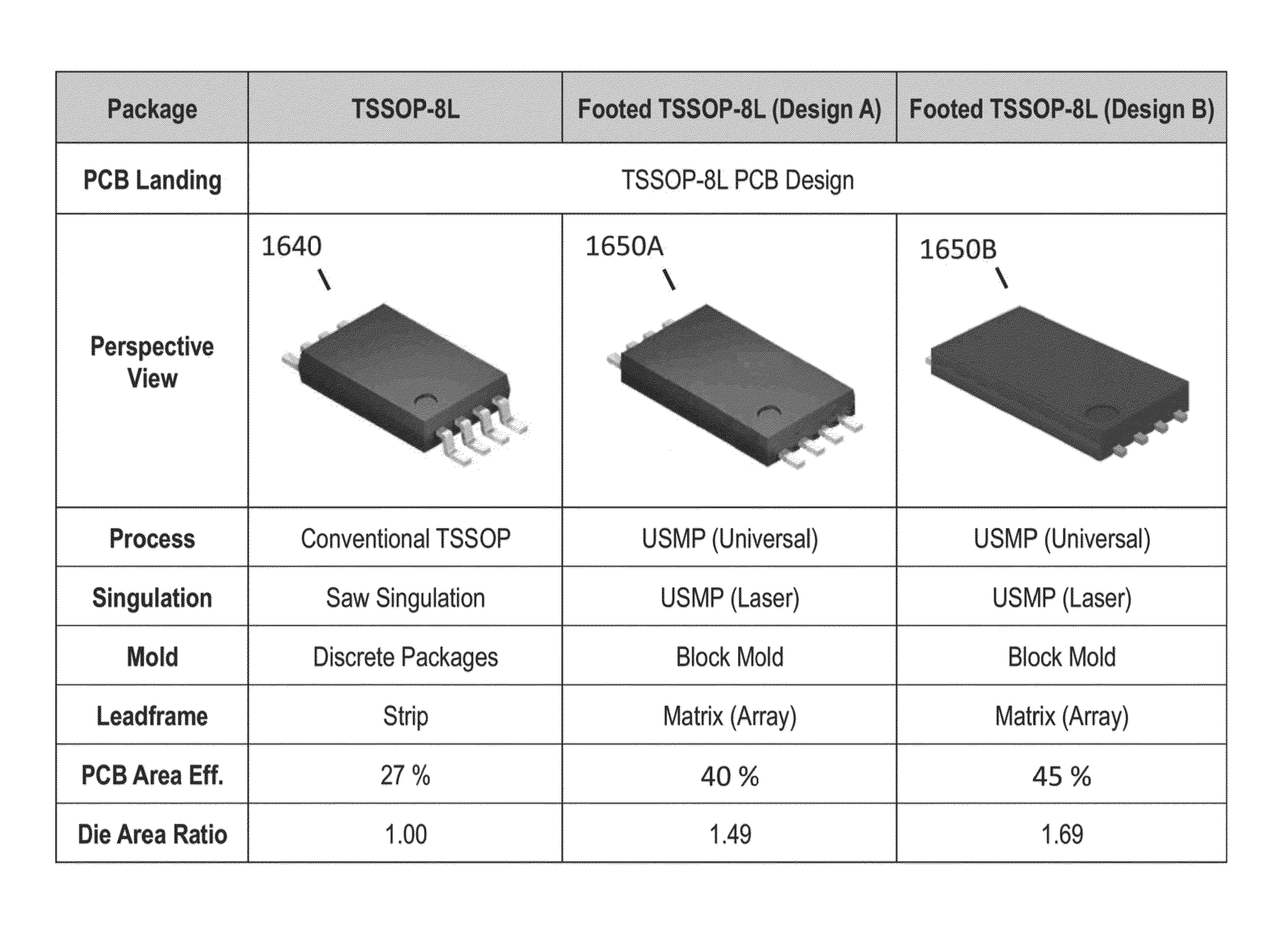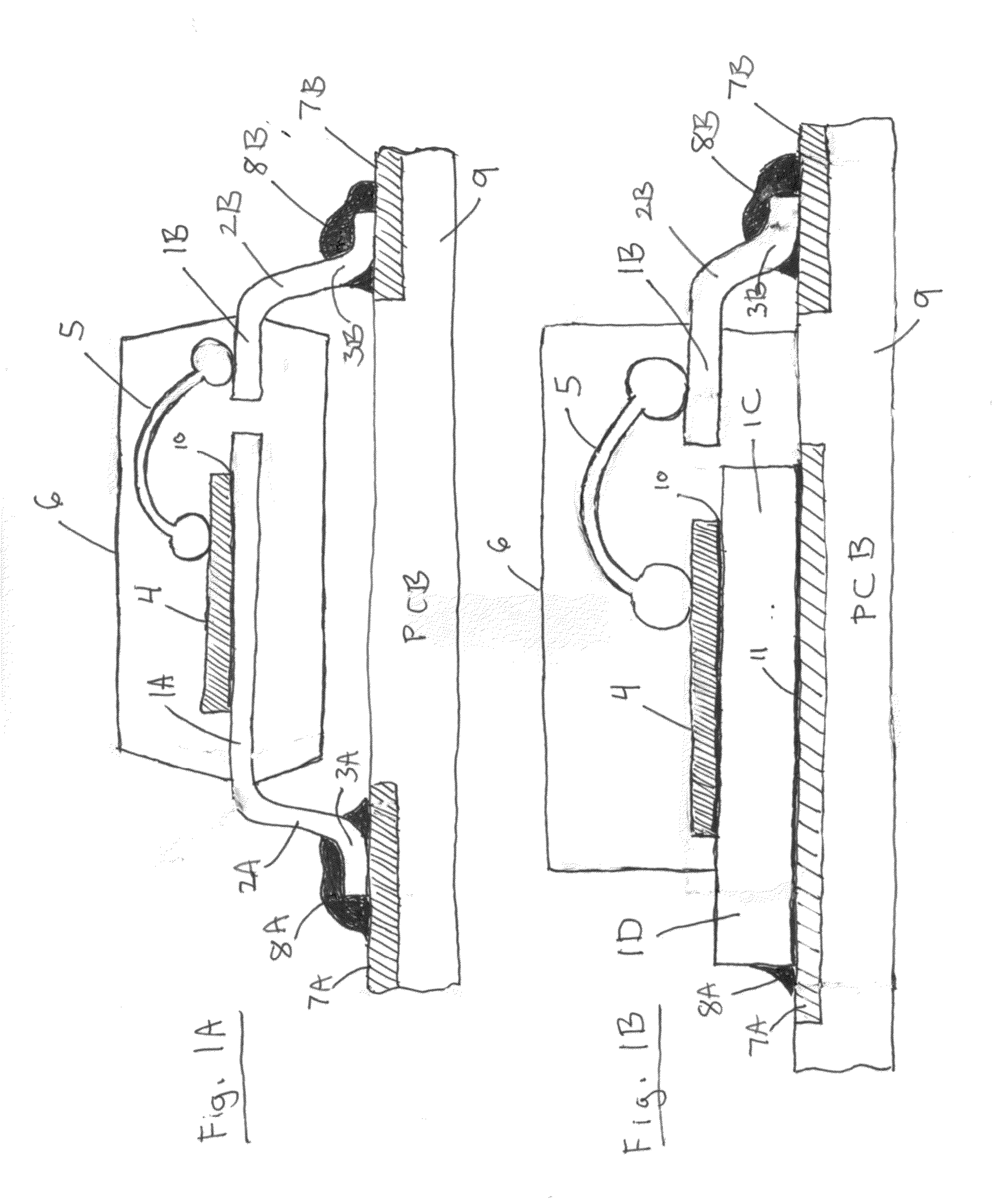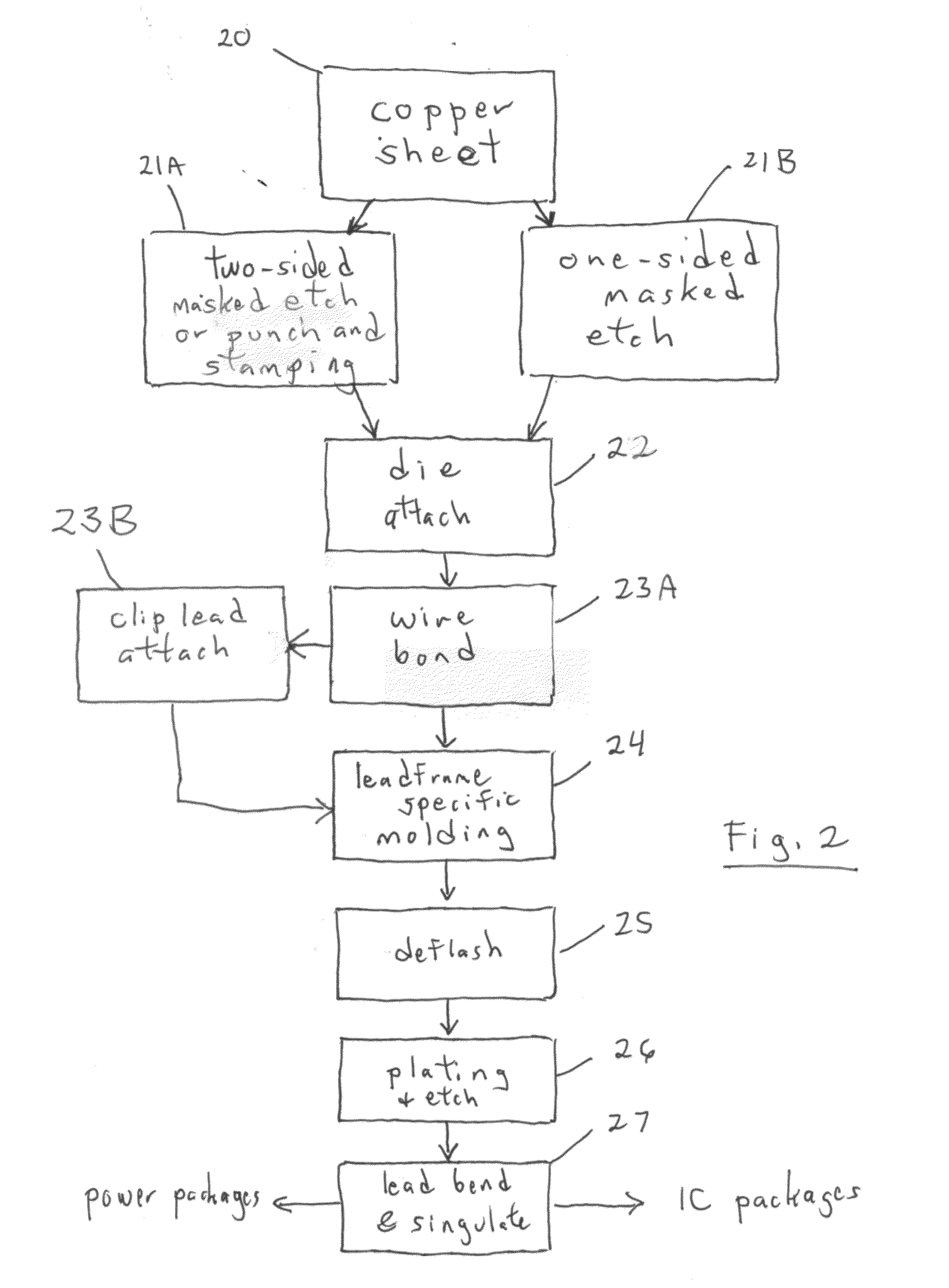As such, gull wing packages are not able to serve the market for thin products and such packages have been completely eliminated from
cell phone and tablet designs.
Other products where gull wing packages persist because of their relatively low cost are, however, unable to be miniaturized in part because of the minimum height restrictions of gull wing packages.
Aside from issues with scaling gull wing packages to below 0.8 mm for low profile applications, such IC packages do not normally include a thick exposed die pad to act as a
heat sink and without
special design modifications are therefore unable to dissipate any significant power or spread heat effectively.
Unfortunately,
mechanical processes are imperfect and subject to unavoidable variability, leading to mismatches between the bottom of flat portion 3B and die pad 1C.
Aside from its poor coplanarity between the bottom of leads and the back of an exposed die pad and its inability to scale to thin
package profiles, the need for manual placement of the solder under the heat tab is another
disadvantage of conventional surface
mount power packages.
This mechanical process, while faster than
etching, creates several problems.
First, compressed
metal exhibits mechanical stress not present in etched leadframes.
Stress can lead to
cracking of plastic or
silicon die contacting the stressed metal.
As a further complication, in leads mechanically thinned by
stamping, the excess metal squeezes out the sides of the thinned lead and must be removed by trimming.
One major
disadvantage of leaded
package technology is that each package needs its own mold, commonly requiring an initial investment of over $100,000 USD.
The unintended consequence of high initial investment is that companies become more cautious about releasing new packages into the market, new package technology and capability become commercially available at a slower pace, and consequentially innovation and advancement slow to a
snail's pace.
High initial investment and low UPH both adversely contribute to product cost.
Down time for changing the mold tool can be an hour or longer, reducing the average
throughput and increasing production net cost per unit.
Guaranteeing coplanarity between exposed die pad 34D and the bottom of leads 33D in manufacturing however remains problematic.
As in the previous SO package description, maintaining good coplanarity between the bottom of exposed die pad 34O and leads 33O is problematic since the alignment is entirely mechanical and subject to unavoidable manufacturing variability.
In manufacturing however, maintaining coplanarity remains problematic especially in low-profile package designs.
Package area efficiency, the maximum die size divided by the external
footprint, i.e. the lateral extent of the leads or plastic whichever is larger, is poor for leaded packages because a lot of space is wasted by the need to bend the lead down to the PCB surface.
Consequently, the die pad of a leadless package is naturally exposed on the package's underside, i.e. not isolated from the PCB, as an unavoidable artifact of its manufacturing process.
Because, however, the
solder paste must be screened onto the PCB in advance, and an expensive temperature regulated
reflow oven or belt furnace is required, manufacturing cost for reflow PCB manufacturing can be twice to four times the cost of simple wave-
soldering, where the PCB and components are simply dipped in solder.
This higher PCB
assembly cost represents one of the major disadvantages of leadless packaging.
While constituting a visibly identifiable feature, the exposed metal on the package vertical sidewall is not sufficient in area for
soldering.
While the package dimensions may be standardized, there is no corresponding standardized size for the exposed die pad.
Such a package cannot be manufactured in the standard process described for QFN and DFN fabrications because sawing or
punching unavoidably results in a perfectly
vertical edge sidewall to the package with all the plastic and metal
cut flush by the saw cutline.
For all of its advantages, one major
disadvantage of the QFN / DFN leadless package is its inability to be used in wave-solder PCB factories.
Also, solder flow must be performed in expensive reflow ovens or belt furnaces making the entire PCB assembly process 2 to 4 times more expensive than that of simple wave-solder factory based production.
Moreover,
visual inspection of leadless packages soldered to a PCB using simple automated camera inspection is impossible because the solder cannot be confirmed from the top view.
Instead expensive X-
ray inspection equipment is required, adding cost and
safety risk into reflow PCB manufacturing.
Nevertheless, despite its benefit in PCB manufacturing, the actual package manufacturing of leaded packages suffers from many issues including poor lead coplanarity, poor manufacturing control in the lead bending process, risk of plastic
cracking during lead bending, risk of
delamination between the plastic and leads, and inability to be scaled into low profile package, especially for package heights below 1 mm.
Poor coplanarity also renders leaded packages difficult to
heat sink using exposed die pads because the package's bent leads do not consistently align with the bottom of the die pad or heat
slug.
Because of long lead dimensions required to perform clamping during lead bending, the length of the conductive leads results in poor package and PCB areal efficiencies and results in excessive lead
inductance, adversely affecting switching performance especially in power applications.
The mounting of power devices is especially problematic because special two-step
soldering is required, first to solder the exposed die pad and heat tab to the PCB, and then to wave-solder the leads.
Variability in the lead-bending process combined with natural stochastic variations in the intervening solder thickness placed beneath the die pad result in unpredictable misalignments between the bottom of the bent leads and the PCB conductor, leading to poor connections, cold solder joints, intermittent contact, and degraded reliability.
Another disadvantage of leaded packages is their manufacturing inflexibility.
While equipment can generally be converted to accommodate different packages, the resulting factory
downtime to convert a line from one package to another results in lost productivity and a lower UPH, thereby increasing per unit manufacturing costs.
Clearly from the above, no existing package meets the combined needs of the market.
Moreover, each class of surface-
mount package used today requires completely different
semiconductor package factories for manufacturing, forcing packaging companies to choose their markets with little chance to expand into new markets without incurring significant additional capital costs.
 Login to View More
Login to View More  Login to View More
Login to View More 


